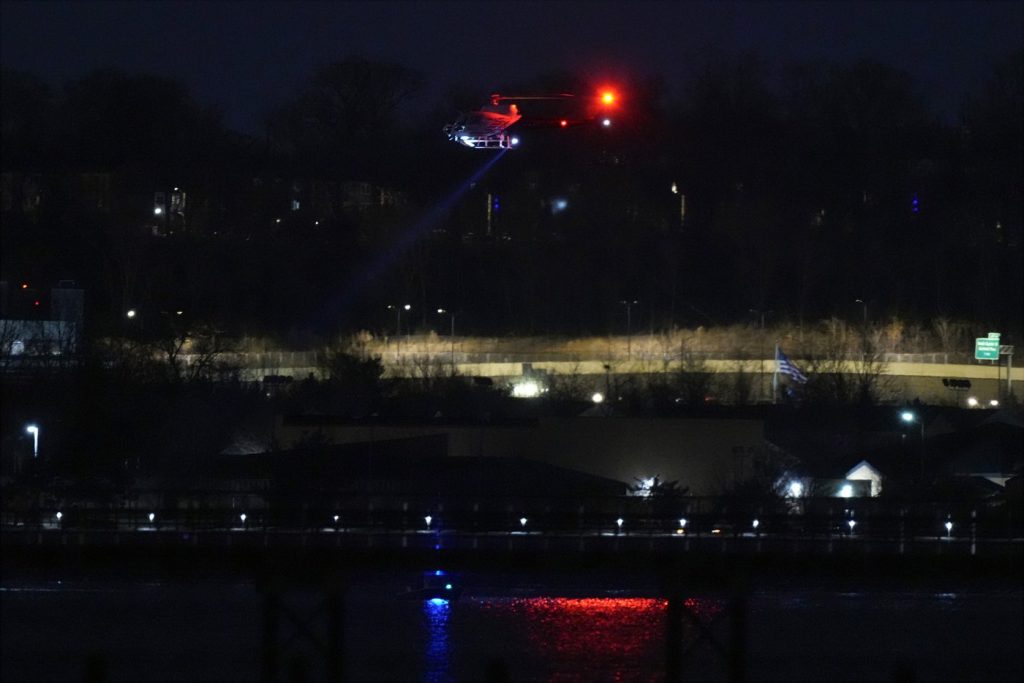A significant incident unfolded on Wednesday when a passenger jet, carrying 60 passengers and four crew members, collided with a U.S. Army helicopter during its landing approach at Ronald Reagan National Airport in Arlington, Virginia. This alarming event sparked a large search-and-rescue operation in the nearby Potomac River, as the local and regional law enforcement agencies were mobilized to respond to the emergency.
While there were no immediate reports regarding casualties or the specific cause of the collision, all flight operations at the airport came to a halt. Emergency services, including helicopters, were deployed to scour the river for any signs of survivors from the accident. The jet involved was determined to be American Airlines Flight 5342, a Bombardier CRJ-701 twin-engine aircraft manufactured in 2004, which was approaching the airport at an altitude of approximately 400 feet and a speed of around 140 miles per hour at the time of the incident.
The U.S. Army confirmed that the helicopter, identified as a UH-60 Blackhawk and based at Fort Belvoir, Virginia, had three soldiers aboard and was engaged in a training flight at the time of the collision. Military aircraft routinely conduct such training flights within the congested and heavily-restricted airspace surrounding the nation’s capital, primarily for operational familiarization and continuity of government planning.
Eyewitness accounts from individuals at the terminal reflected a somber mood following the accident. Erie County Executive Mark Poloncarz was waiting for his flight to Buffalo when he observed emergency vehicles moving towards the river. Initially unfazed by the commotion, he later learned through social media that a plane crash had occurred. As announcements regarding a full-ground stop were made, the atmosphere in the terminal shifted from frustration to sadness as the gravity of the situation became clear.
The collision’s timing was particularly critical, occurring less than 30 seconds after an air traffic controller had inquired whether the helicopter had sighted the incoming passenger aircraft. According to audio feeds from flight tracking sites, there was no response from the helicopter to the controller’s warnings. Just before the crash, the passenger jet's transponder ceased transmitting data about 2,400 feet short of the runway, roughly over the Potomac River.
President Donald Trump addressed the nation regarding the "terrible accident," expressing condolences and gratitude towards first responders for their efforts. He indicated that he was closely monitoring the situation and assured the public that more information would be forthcoming as it developed. Additionally, Homeland Security Secretary Kristi Noem announced that all available resources from the U.S. Coast Guard were being deployed to assist in search and rescue operations.
Reagan Washington National Airport is known for its proximity to downtown Washington, D.C., making it a popular choice for travelers. The airport’s runways offer stunning views of iconic landmarks such as the Washington Monument and the Lincoln Memorial, creating a picturesque welcome for visitors to the capital.
The last fatal incident involving a U.S. commercial airline occurred in 2009 in Buffalo, New York, resulting in the loss of all 50 individuals aboard the plane, including passengers and crew. Investigations have determined that the captain's error led to that tragic crash.
As authorities continue to respond to this shocking accident, the broader implications and potential causes of the collision will be critically examined, with investigations expected to delve into the operational protocols governing training flights in congested airspace. The incident serves as a stark reminder of the complexities and dangers involved in aviation, particularly in heavily trafficked airspace like that surrounding Washington, D.C.










